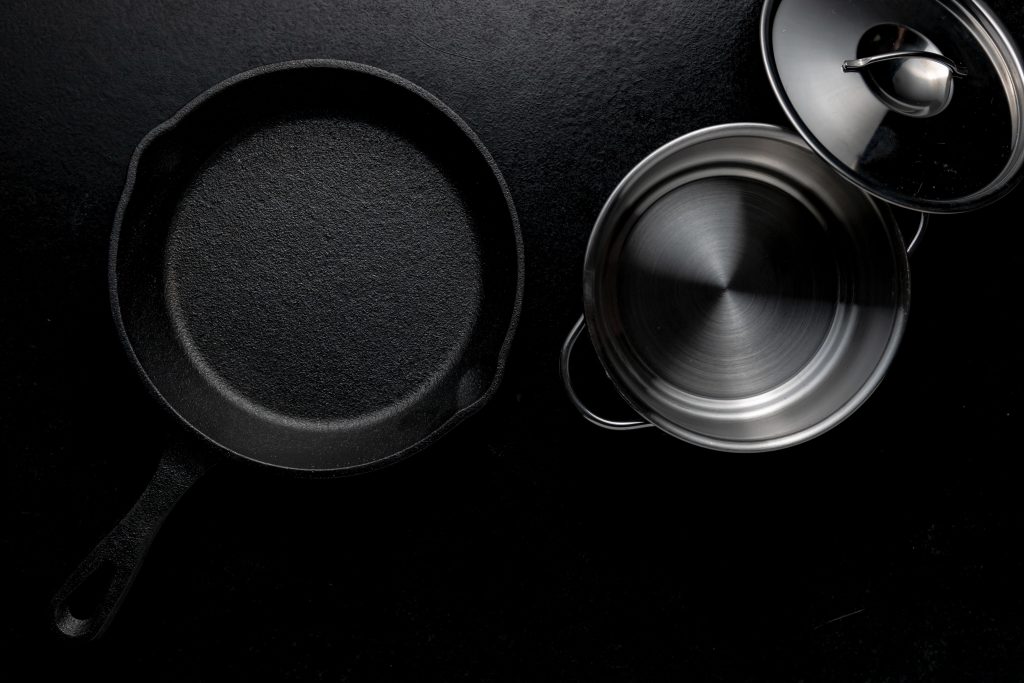
Your kitchen should feel like it works with you, not against you. The tools you reach for – especially the old ones, like a cast iron pan – should pull their weight without throwing you into a panic over maintenance. Yet here we are. You finish cooking something delicious, glance over at that blackened, still-sizzling skillet, and suddenly you freeze. Because the question hits you again: how do you clean your cast iron skillet after cooking without messing it all up?
People have made this into some sort of sacred ritual. It doesn’t have to be. Just treat it like you’d treat something valuable but not fragile. You don’t need white gloves. You need timing, heat, and the right cleaning and washing equipment – something with texture that can scrub without stripping away the seasoning.
Wipe It While It’s Still Hot
The trick is not to wait. Letting it sit means stuck-on food, and nobody enjoys scraping dried meat crust off a pan. While the skillet’s still warm – but not hot enough to burn your fingers – dump out any grease that’s still lingering. Use a wad of paper towels to wipe out the surface. That alone does most of the work.
If there’s stubborn stuff clinging to the metal, don’t panic and don’t reach for soap. Use coarse salt and a splash of hot water. It scrubs just enough without scraping off that layer you’ve been building with every use. I always keep salt next to the stove just for this.
The steps are stupid simple:
– Pour off the grease
– Wipe the inside clean while it’s warm
– Scrub stuck bits with salt and water
That covers 90% of the jobs I throw at mine.
Don’t Let It Sit Wet
Water and cast iron do not get along. Rinse it? Sure. But don’t walk away. Don’t let it drip dry in the rack. That’s how you get rust, and once it’s there, it’s a whole different process to fix.
I dry mine with a towel the second it’s rinsed. If I still feel any dampness, I throw it on low heat for a minute or two. That heat pulls out the last bit of moisture hiding in the pores of the metal.
Especially after cooking anything oily – think sausage, fish, burgers – you want to make sure it’s bone dry before moving on.
Oil It Before You Put It Away
Once it’s dry, I rub in a little oil. You don’t need much. A few drops of neutral oil work fine. Wipe it across the entire surface, inside and out. Then heat it for a short burst to let the oil settle. You’re not trying to fry anything – just give the pan a finish that keeps the seasoning alive.
This habit matters more than people realize. Whether you’re trying to figure out how to clean a cast iron pan after cooking tomato sauce or how to clean a cast iron frying pan after use, that oil rub seals the deal.
Here’s What I Never Do
People mess this up in the same few ways. They either go overboard or ignore what matters. These are the things I avoid:
– No soaking. Ever.
– No dish soap. Not even a drop.
– No steel wool or anything sharp.
Do that stuff, and you’re fighting against the pan instead of working with it.
Cast Iron’s Not Precious. Just Demanding in Its Own Way
There’s no reason to treat it like a museum piece. It’s not delicate; it just needs consistency. Keep it clean, keep it dry, keep it oiled. That’s all.
So the next time you’re standing in your kitchen holding a dirty skillet, wondering how to clean your cast iron after cooking something messy, don’t overthink it. Scrub it while it’s warm, dry it like you mean it, and give it a little oil before you put it away. That’s all it ever wanted from you.